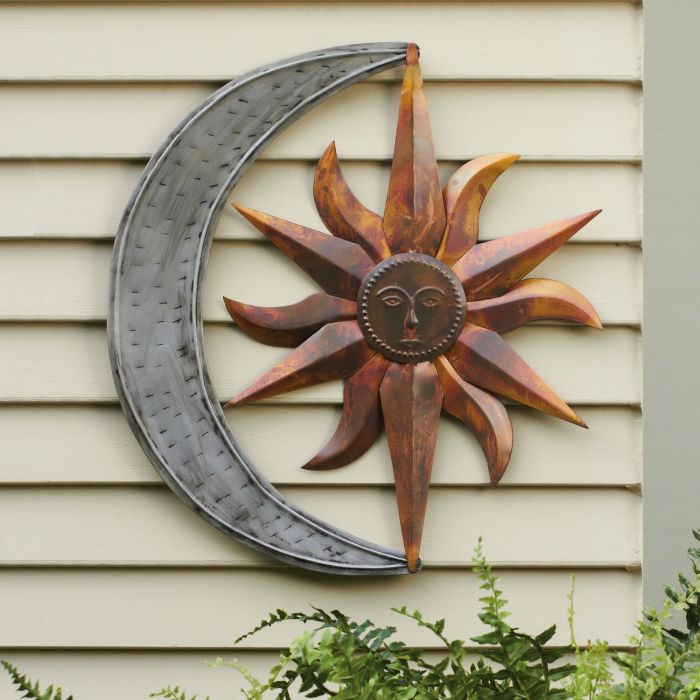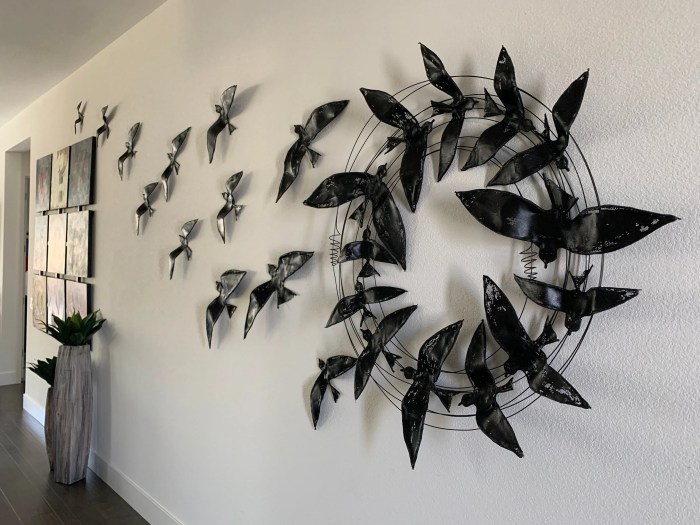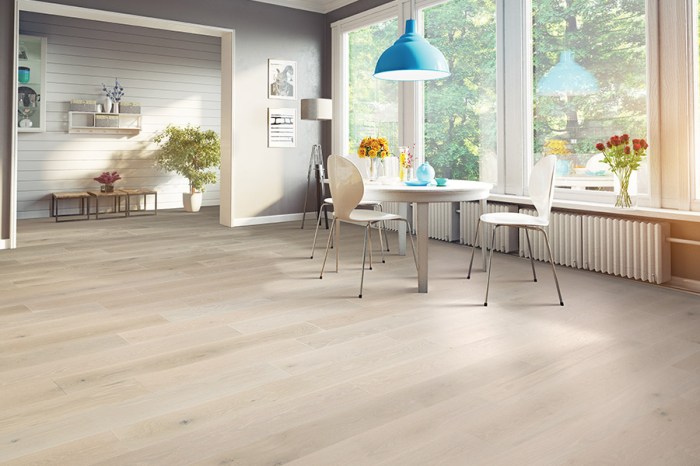Design Considerations for Large Metal Outdoor Decor

Large metal outdoor decor – Large metal outdoor décor offers a unique opportunity to enhance the aesthetic appeal and overall ambiance of any outdoor space. However, successful integration requires careful consideration of several key design elements, primarily scale and proportion, and a thoughtful understanding of how the chosen piece interacts with its surroundings. The impact of a large metal sculpture can range from subtly enhancing the existing landscape to becoming a dramatic focal point, depending on its size, style, and placement.
Scale and Proportion in Outdoor Metal Decor Placement
The success of any large metal outdoor décor piece hinges on its appropriate scale and proportion relative to the surrounding environment. A sculpture that is too small will be visually insignificant, lost amongst larger elements like trees or buildings. Conversely, an oversized piece can overwhelm the space, creating an unbalanced and visually jarring effect. Careful consideration of the size of the surrounding area, the scale of other landscape features (plants, pathways, buildings), and the overall style of the garden are crucial.
For example, a delicate, filigree-style metal sculpture might be perfect for a small, intimate courtyard, while a bold, abstract form would be more suitable for a large, open lawn. The principle of visual weight – how much a particular element seems to weigh visually – must also be considered. A dark, heavy metal sculpture will have a stronger visual presence than a lighter, brighter one of the same size.
Imagine a towering metal spider, its legs crafted from intricate swirls of steel, guarding your entryway. Large metal outdoor decor offers a unique, durable aesthetic, perfect for year-round displays. For a spooky twist, check out these amazing outdoor halloween home decor ideas to complement your existing metal pieces, perhaps adding a ghostly glow to your metallic masterpiece.
The possibilities are endless when combining sturdy metal structures with seasonal flair!
Garden Layout Designs Incorporating Large Metal Sculptures
The strategic placement of large metal sculptures can dramatically alter the perceived flow and character of a garden. Three distinct garden layouts demonstrate the versatility of these pieces.
Design 1: Modern Minimalist GardenThis design features a sleek, geometric metal sculpture as the central focal point of a minimalist garden. The sculpture, perhaps a polished stainless steel abstract form, is placed in a spacious gravel area, surrounded by low-growing, evenly spaced succulents and grasses. Clean lines, monochromatic color palettes, and simple geometric forms create a sense of calm and order. The sculpture’s reflective surface interacts with the sunlight, adding a dynamic element to the otherwise static landscape.
Design 2: Rustic Cottage GardenIn contrast, a rustic cottage garden might incorporate a large, weathered metal sculpture, possibly resembling a stylized tree or animal. This piece would be positioned amongst lush plantings, including climbing roses, wildflowers, and other flowering plants. The aged texture of the metal complements the organic forms of the plants, creating a sense of harmony and integration. The sculpture is not the sole focus, but rather a visually interesting addition to the overall romantic and whimsical feel of the garden.
Design 3: Formal Traditional GardenA formal traditional garden might utilize a large, ornate metal fountain or birdbath as a central feature. This piece would be placed symmetrically, perhaps at the end of a long axis, flanked by carefully pruned hedges and other symmetrical plantings. The sculpture’s refined design would complement the garden’s structured layout and enhance its overall sense of elegance and sophistication.
The fountain’s water feature adds a dynamic element, contrasting with the stillness of the surrounding landscape.
Large Metal Decor in Different Landscaping Styles
The appropriateness of large metal décor varies significantly depending on the landscaping style.In modern landscapes, clean lines and geometric forms are favored. Sculptural, abstract metal pieces in polished steel, aluminum, or other contemporary materials would integrate seamlessly. These pieces often serve as strong focal points, accentuating the minimalist aesthetic.Rustic landscapes, on the other hand, benefit from weathered, textured metal sculptures that blend harmoniously with natural elements.
Pieces with organic shapes, reminiscent of trees, animals, or natural formations, would feel perfectly at home in such a setting. The patina and texture of the metal contribute to the overall sense of age and history.Traditional gardens generally benefit from more ornate, decorative metalwork. Intricate designs, perhaps inspired by classical motifs or historical styles, would enhance the garden’s formal character.
Fountains, gazebos, and other architectural elements in metal could serve as both functional and decorative pieces. The overall aesthetic is one of elegance and sophistication.
Manufacturing and Sourcing of Large Metal Outdoor Decor

The creation and acquisition of large metal outdoor decor involves a multifaceted process encompassing various manufacturing techniques, material choices, and sourcing strategies. Understanding these aspects is crucial for ensuring both aesthetic appeal and environmental responsibility. This section will detail common manufacturing processes, the environmental implications of different materials and processes, and potential sourcing options.The selection of manufacturing methods significantly influences the final product’s quality, durability, and cost.
Different processes are suited to different designs and scales.
Manufacturing Processes for Large Metal Outdoor Decor
Large metal outdoor decor pieces are typically produced using one or a combination of several manufacturing processes. Each method offers unique advantages and disadvantages in terms of cost, design flexibility, and final product characteristics.
- Casting: This involves melting metal and pouring it into a mold. Casting allows for intricate designs and complex shapes, but can be expensive and energy-intensive, particularly for large pieces. Common casting methods include sand casting, investment casting (lost-wax casting), and die casting. Sand casting, for example, is a relatively inexpensive method, but the surface finish is usually rougher and requires further finishing.
Investment casting provides a finer surface finish, but it’s more costly.
- Forging: This involves shaping metal using compressive forces, such as hammering or pressing. Forging produces strong and durable pieces, ideal for withstanding outdoor conditions. However, forging is typically limited to simpler designs and is often more expensive than casting for large, complex pieces. Examples include wrought iron gates or decorative elements.
- Welding: This involves joining pieces of metal together using heat and pressure. Welding is highly versatile and allows for the creation of large, complex structures from smaller, more manageable components. Different welding techniques, such as MIG (Metal Inert Gas) and TIG (Tungsten Inert Gas) welding, offer varying degrees of precision and strength. Welding is often used in conjunction with other processes, like cutting and shaping, to create the final piece.
- Fabricating: This involves cutting, bending, and assembling metal sheets or sections to create the desired shape. Fabricating allows for a high degree of design flexibility and is often more cost-effective than casting or forging for larger, simpler designs. Laser cutting and CNC (Computer Numerical Control) machining are commonly used in fabrication to achieve high precision and efficiency.
Environmental Impact of Metal Types and Manufacturing Processes
The environmental impact of large metal outdoor decor depends on both the metal type and the manufacturing process. Careful consideration of these factors is essential for minimizing the overall environmental footprint.
- Metal Type: The extraction, processing, and transportation of metals contribute to greenhouse gas emissions, water pollution, and land degradation. Recycled metals significantly reduce the environmental impact compared to using virgin materials. Aluminum is generally considered more environmentally friendly than steel due to its lower energy requirements for production and higher recyclability rate. However, the production of aluminum is energy-intensive.
- Manufacturing Process: Casting processes, particularly those involving sand casting, can generate significant waste. Welding processes can produce fumes and particulate matter, requiring proper ventilation and safety measures. The energy consumption of each process varies significantly, impacting the overall carbon footprint. For example, forging typically requires less energy than casting for equivalent size and material.
- Finishing and Coatings: The application of paints, powder coatings, and other finishes can also have environmental implications. The use of low-VOC (volatile organic compound) paints and environmentally friendly coatings is crucial for minimizing air pollution and protecting human health. Powder coating, for instance, is often preferred due to its lower VOC content compared to liquid paints.
Sourcing Options for Large Metal Outdoor Decor
Several avenues exist for sourcing large metal outdoor decor, each with its own advantages and disadvantages.
- Local Artisans: Purchasing from local artisans supports the local economy and often results in unique, handcrafted pieces. However, the availability and cost may vary significantly depending on the artisan’s skill and demand.
- Online Retailers: Online retailers offer a wide selection of products from various manufacturers and suppliers, providing convenience and price comparison options. However, the quality and durability of the products may vary, and shipping costs can be substantial for large items.
- Wholesale Suppliers: Wholesale suppliers can offer cost savings for large-scale projects, but may require larger minimum order quantities. Finding a reputable supplier with high-quality products is crucial to ensure the success of the project.
- Landscape Supply Companies: These companies often carry a range of pre-fabricated metal decor, potentially offering convenience and readily available stock. However, the design choices may be more limited compared to custom options.
Question Bank: Large Metal Outdoor Decor
How long does large metal outdoor decor typically last?
The lifespan depends on the metal type and finish. Proper maintenance can significantly extend its life, potentially for decades.
Are there any safety considerations when using large metal outdoor decor?
Ensure stability to prevent tipping. Sharp edges on some pieces might require caution, especially around children.
Can I customize large metal outdoor decor?
Many artisans offer customization options; you can often specify size, finish, or even design elements.
How do I protect my metal decor from extreme weather?
Consider using protective coatings or storing particularly delicate pieces during severe storms or harsh winters.


